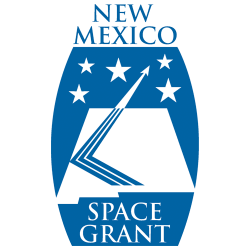
2018 SUPPORTED RESEARCH & EDUCATION
Solid State Radiation Detectors Using Quantum Dots
Principal Investigator: Dr. Hongmei Luo
Affiliation/Dept.: New Mexico State University, Chemical & Material Engineering
Description: We propose to prepare inks of lead chalcogenide Quantum Dots (QDs) (bandgap about 1 eV) with small and/or conductive ligands, with which we will deposit very thick (up to 100 µm) films for the stopping and detection of gamma-rays. We will use the films in simple two-contact diode prototype device configuration with gold electrodes, and check for sensitivity to gamma-rays by monitoring for current production upon exposure to small elemental radioactive sources. We will further optimize promising devices by altering sizes of QDs, QD material (including potentially heterostructured or shape-controlled nanocrystals), film thickness, type of ligand, and device geometry.
Validation and Application of a Novel Remote Sensing Model for Improving Agricultural Water Management
Principal Investigator: Dr. Zohrab Samani
Affiliation/Dept.: New Mexico State University, Civil Engineering
NASA Collaborator: Dr. Joshua B. Fisher, NASA Jet Propulsion Laboratory
Description: This research proposes validation and application of a novel remote sensing model for improving agricultural water management in New Mexico and around the world. In recent years, remote sensing technology using multispectral images from Landsat and other satellites have provided an incredible opportunity for large scale monitoring and calculation of energy partition and plant water use on the ground level. Regional ET Estimation Model (REEM) is a remote sensing model which has been developed at New Mexico State University that uses multispectral images from Satellite and ground level information to calculate high resolution energy balance and crop water consumption (Evapotranspiration, ET) (Samani et al 2007, 2009, 2012). The new version of REEM Model (REEM+) has recently been developed which can calculate energy balance and ET without the needs for daily local calibration. The new model can also calculate ET based on thermal band alone.
Radiation-hard Detectors of Charged Particles in Space
Principal Investigator: Dr. Sally Seidel
Affiliation/Dept.: University of New Mexico, Physics & Astronomy
Description: We will initiate a program to develop silicon sensors with high radiation hardness for space applications. The target tolerance to charged particle fluence is beyond 2E16 neq/cm^2. These devices implement the transformational 3D technology in which electrodes are perpendicular to the silicon wafer surfaces. We will characterize the devices’ leakage current, capacitance, and charge collection efficiency as a function of exposure to protons, neutrons, and gammas for several design variations. The deliverable will be a report on the properties of these devices as well as a plan for going forward into collaboration with NASA on readout, packaging, and cooling. Silicon sensors are used in radiation monitors on Mars, in solar particle event detectors, and in human dosimetry. This research is motivated by the natural expectation that their radiation tolerance must be improved as exploration demands operation over longer periods of time, in harsher radiation environments, and during lengthy transits between bodies in our solar system.
Solar-powered Photocatalytic Oxidation Membrane Distillation for Closed-Loop Wastewater Reuse and Recycling in Mars Human Base
Principal Investigator: Dr. Pei Xu and Dr. Nagamany Nirmalakhandan
Affiliation/Dept.: New Mexico State University, Civil Engineering
Description: This project aims to develop a solar-powered multi-functional photocatalytic oxidation membrane distillation (POD) system for closed-loop water reuse and recycling in Mars human base. The project will change current wastewater treatment practice to create a new paradigm using wastewater as resources for potable uses and food production, and solving the challenges of chemical and energy scarcity on Mars.
